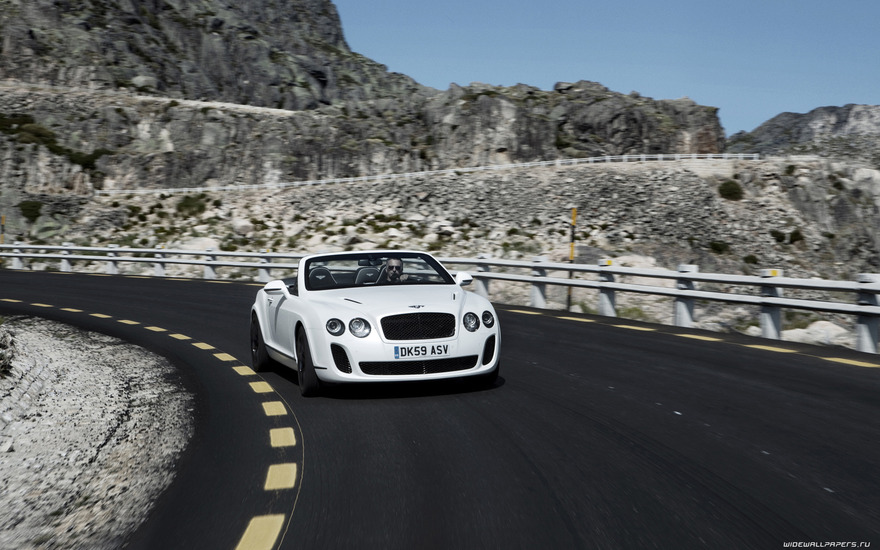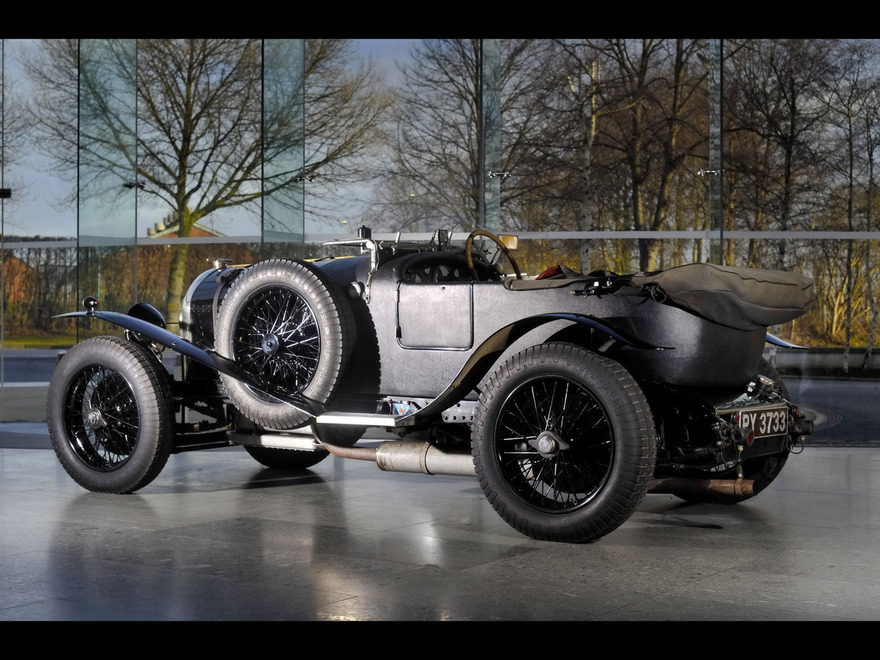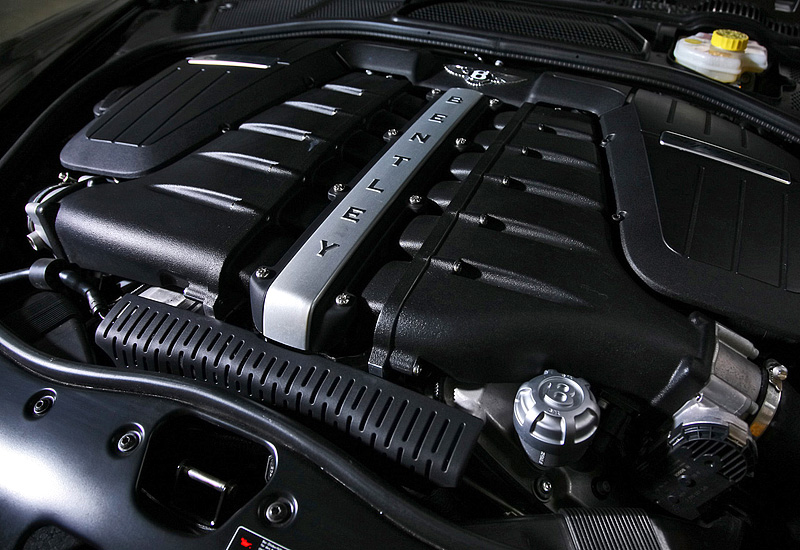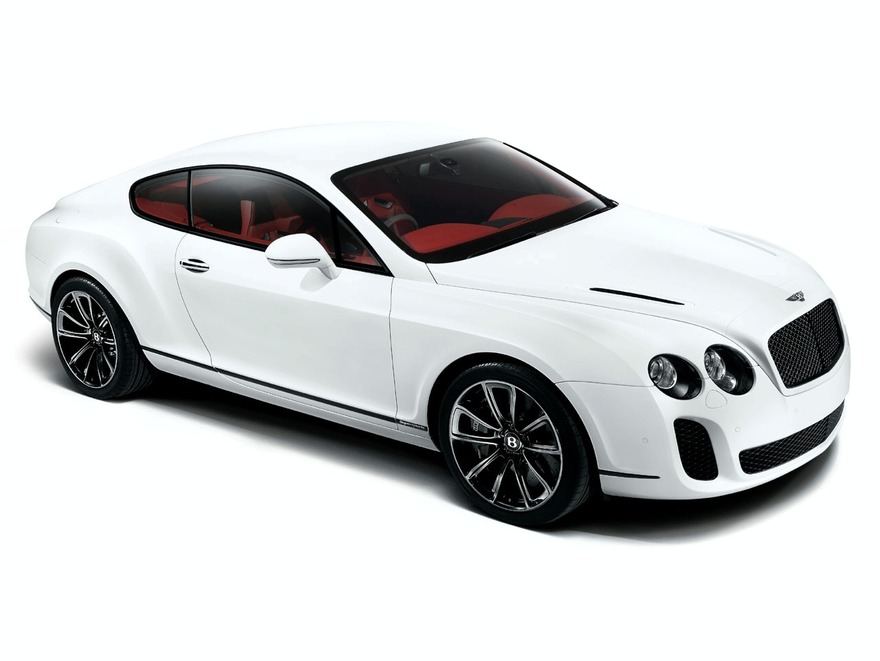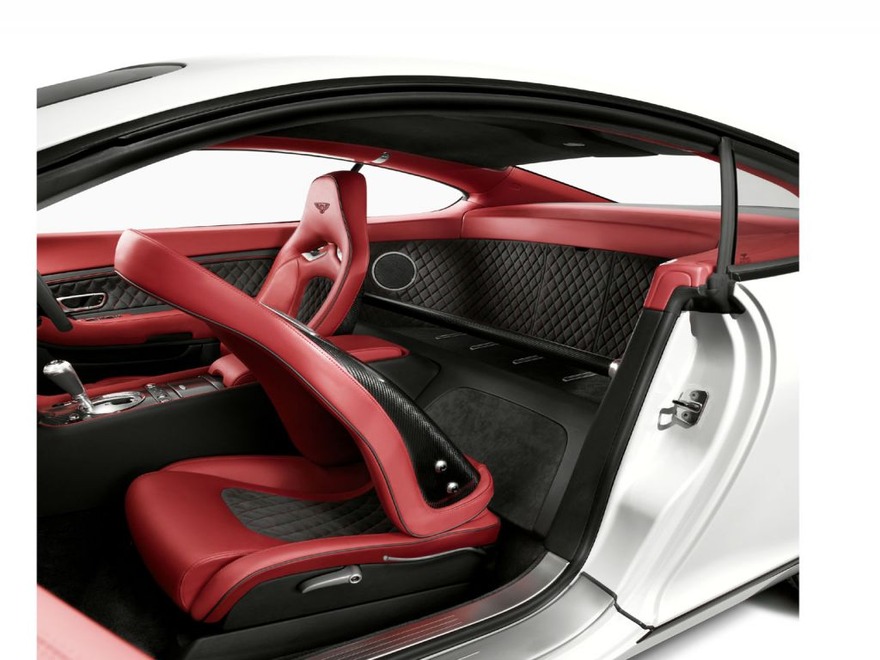At the 2009 Geneva Auto Show, Bentley revealed its first biofuel powered car. Biofuel became the new ecological strategy announced by Bentley back in February of 2008. According to this strategy Bentley promised to reduce CO2 emissions by at least 15 percent for the entire vehicle line by 2012 and introduce a new powertrain which could improve fuel economy by 40(!) percent.
Stuart McCullough, the company’s sales and marketing board member, noted that the first appearance of a biofuel powered car in Geneva proved that Bentley was on its way of meeting its objectives; that biofuel was an advanced technology which had already started spreading in some parts of our planet; that Bentley wanted to be an active participant of this process.
In 2010 the Bentley Company introduced new members of the Continental family (coupé and convertible) with updated engines able to operate on pollution-free fuel — bioethanol E85 (blend of 85% spirit and 15% regular petrol).
The British supercar Bentley Continental Supersports became the first car in the premium class segment powered by biofuel. This car attested to the fact that it was possible to create powerful and fast luxurious cars which are also friendly to the environment.
It was named Supersports for a reason: a similar 3-litre 85-hp Bentley model was produced in the period between 1921 and 1929 and became famous for being the first Bentley able to go faster than 160 km/h.
It is obvious that the powertrain had to experience significant changes due to new fuel type implementation. Bentley Continental Supersports has an upgraded 6-litre VW W12 Twin Turbo engine made of aluminium-silicon alloy together with multi-point electronic indirect injection. Such engine can be powered by petrol, bioethanol (E85) or any combination of the two.
The necessary fuel flow is achieved through a returnless fuel system and also twin variable flow fuel pumps and a new closed loop fuel rail design with pressure sensor. The fuel system now has O-rings, gaskets and pipes made of new materials. New valve coatings and hardened valve seat material improved lubrication. Also new spark plugs with a wider heat range provide slower combustion.
A sensor in the fuel supply system detects the blending ratio in real time and varies the engine mapping to ensure power, torque and emissions remain at the same level no matter what fuel is used.
Taking into consideration that it is a supercar, one can still call it economic: its urban fuel consumption figure is 24.5 litres per 100 km, extra-urban fuel rate is only 11.6 litres and it uses 16.3 litres for the combined cycle.
The new front in-line engine produces 621 hp at 6 000 rpm with maximum torque of 800 Nm at 1700 rpm which makes it the most powerful supercar in the entire Bentley vehicle line. The picture is completed by ZF-6 speed automatic transmission with “Quickshift” system (enables double downshifts), delivering torque via permanent all-wheel drive. Positive torque during downshifts is achieved through engine and gearbox electronic controller interaction for extra throttle and fuel injection during the overrun. During transmission upshifts, fuel and ignition are cut momentarily to give faster mechanical shift times through torque reduction, also improving shift quality and durability. It is noteworthy that it has a 40:60 front-rear torque split which allows improving the corner exit agility of the supercar.
A few words about the braking system: it comprises cross-drilled ventilated carbon ceramic brake discs and 6- piston calipers. Moreover, this car is fitted with 20-inch alloy wheels with Pirelli PZero UHP low-profile tires (275/35 R20). Lightweight braking system together with alloy wheels and exclusive tires provide the car with excellent performance and ride comfort in any driving conditions.
This model has a stiffer suspension lowered by 10 mm at the front and 15 mm at the rear for steering improvement, it has anti‑roll bar and Servotronic steering for sharper turn-in. The Continuous Damping Control (CDC) system serves to reduce the body roll.
Talking of performance: the Supersports model has a powerful engine and weighs quite a lot (2 250 kg) but its performance can be compared to the results demonstrated by the best world supercars — its top speed is 330 km/h and acceleration up to 100 km/h takes only 3.8 seconds. So by the time Continental Supersports rolled off the production line it became the most powerful and fastest car produced by the Bentley Company — it outperformed Bentley Continental GT Speed in power and speed figures.
The changes in powertrain also caused changes in the exterior of the car which was built on the base of a standard Bentley Continental coupé: the engineers increased the surface of the radiator grill intakes, added diffusers in the bonnet, changed the bumper. All these modifications offer effective cooling of the engine compartment, ventilation of front brakes and also increase in downforce at the front of the car. In order to emphasise the exterior relief and agility of Bentley Continental Supersports the restyled rear wings were added to accommodate a wider rear track.
One should also mention that in order to achieve such great performance as stated above, place for carbon fibre parts was found on the steel body of the supercar. The rear part of the car’s interior and a few of luggage compartment elements are made of this material. Besides that, the rear seats had to be removed which was done by Bentley for the first time. Taking into consideration the alloy wheels the car became 110 kg lighter.
What concerns the technical equipment, the car is fitted with a rear seat entertainment system together with in-car DVD system, iPod/iPhone and USB connection. There is no need to ask whether it is equipped with GPS-navigation, electronic air conditioning and cruise control, or electronic parking brake — it has it all because it’s a Bentley, ladies and gentlemen!
To sum it up, one can state that Bentley Continental Supersports is an ecological, luxurious and high-priced car. In Russia the cost of Continental Supersports coupé starts at $350 000 and the convertible is even more expensive.

